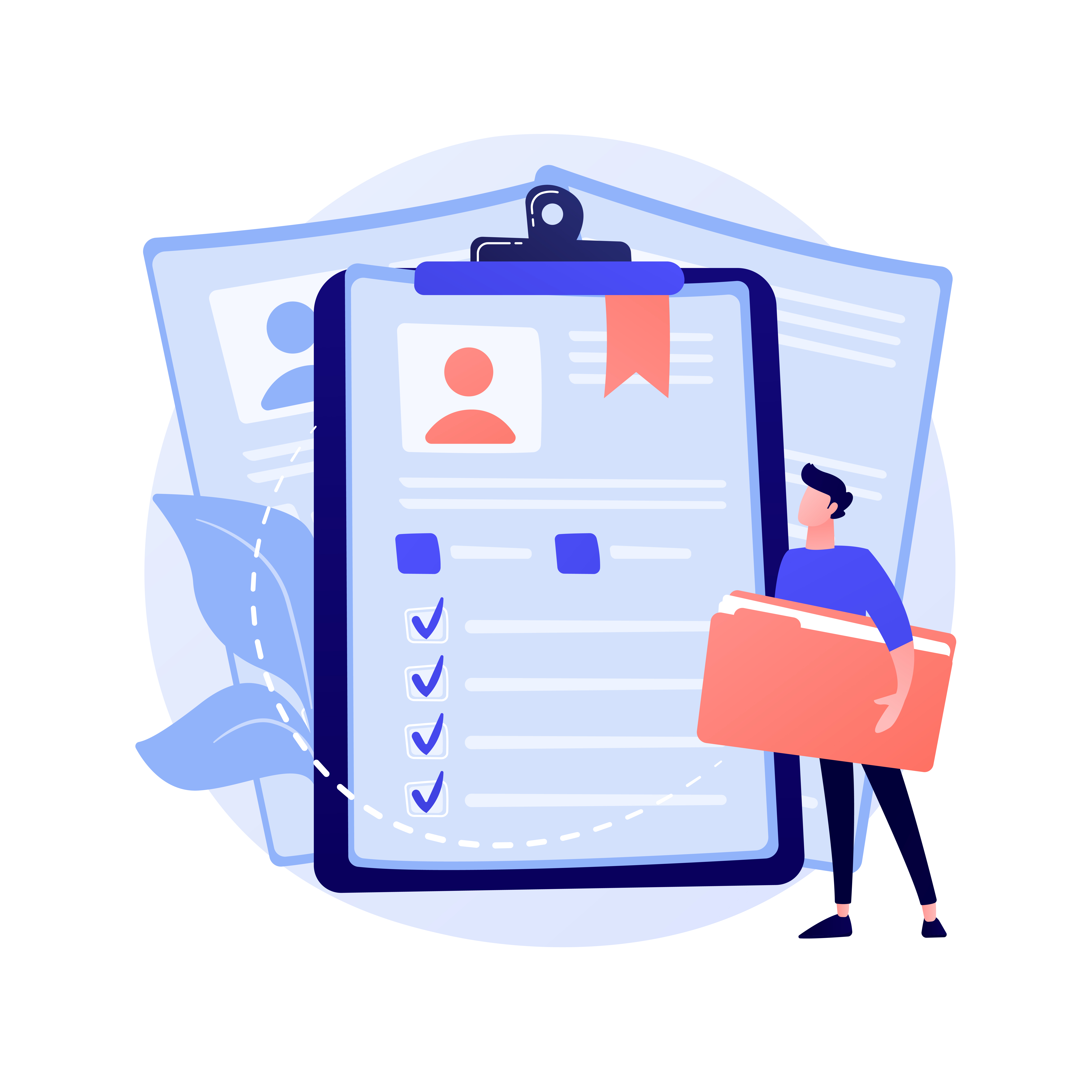The Ultimate Guide to Resume Writing for Students and Teachers
What Is a Resume?
Resumes are documents that provide a brief overview of a jobseeker’s personal details, education, skills, and accomplishments.
Known as CVs, or curriculum vitae, in some parts of the world (e.g. Ireland and the UK), resumes are usually no more than two pages long.
Resumes are used in the initial stage of making a job application and are typically sent to the person responsible for hiring with the hope of securing an interview at the next stage of the hiring process.
While resumes were traditionally printed off as hard copies and posted to potential employers, these days it is much more common to compose them digitally via word processing software such as Microsoft Word or Google Docs.
A wide variety of free and paid-for templates are available online. Once a student has completed their resume or CV, they will usually save these in PDF format to prevent changes from being made by anyone. They are then sent as an email attachment
HOW TO WRITE A RESUME: A COMPLETE & INTERACTIVE TEACHING RESOURCE




This resource takes the form of an editable and interactive Google Slides™ presentation and a printable PDF format.
With worksheets, graphic organizers, writing templates, supporting videos, and discussion activities, this classroom/remote learning-ready resource contains everything you need to take students from nervous novice to career-ready resume writing whizzkids with ZERO PREP required.
Beautifully illustrated, this is the complete resume writing resource. Inside, you’ll find:
Why Are Resumes So Important?
As a job seeker, it is essential that an organized and up-to-date resume is always to hand.
Employers place great stock in resumes as these hard-hitting little documents perform a number of important functions.
For example, when done right, resumes:
- Grab the employer’s attention and help the applicant stick out in a crowd
- Communicate the benefits of hiring the applicant
- Outline the skills and experience of the applicant
- Match those skills and experience to the advertised position
- Secure the applicant an interview, moving them one step closer to being hired.
To attain all these considerable benefits will require students to ensure their resumes are well-organized, well-presented, and, where possible, filled with relevant skills and experience.
Sample Resumes
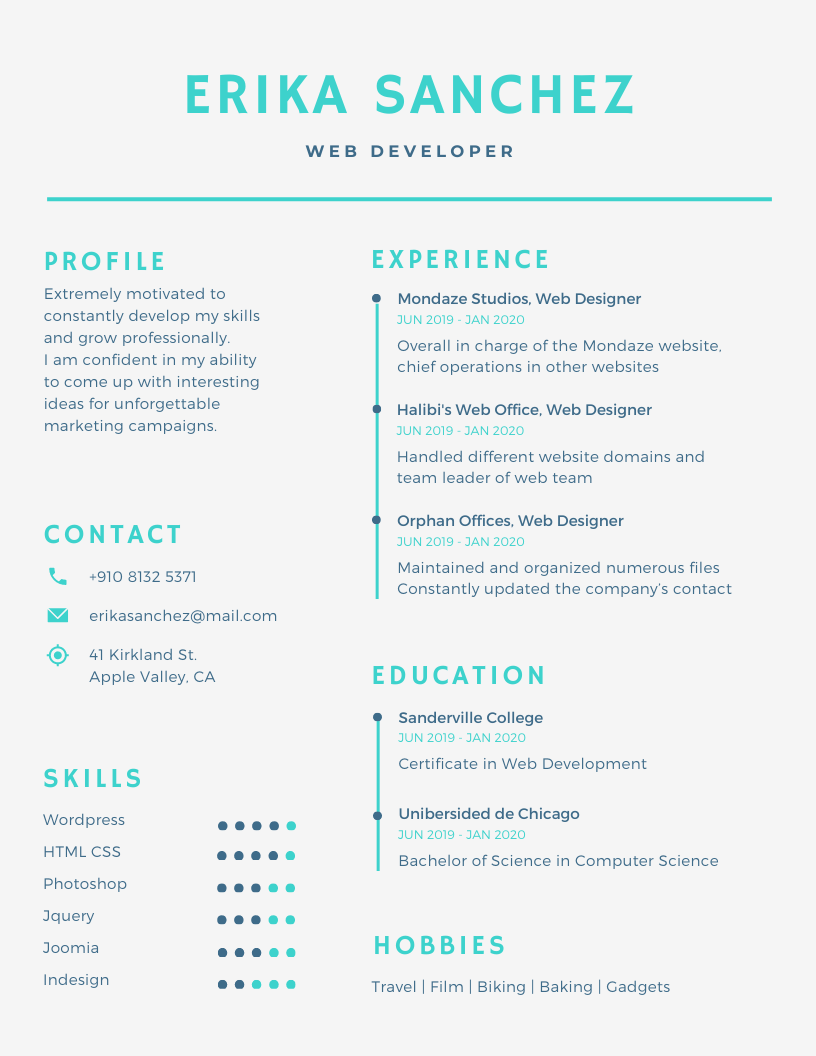
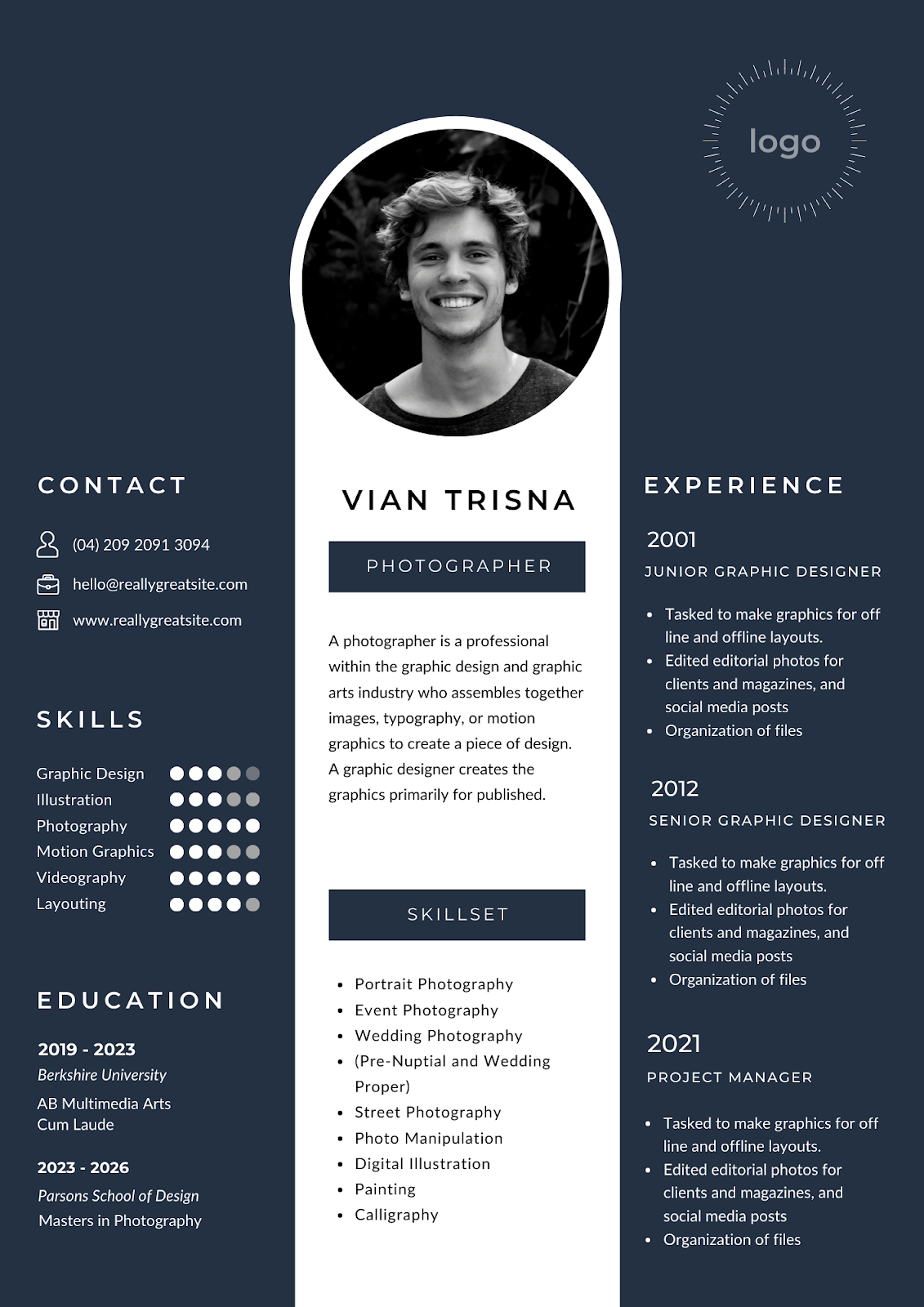
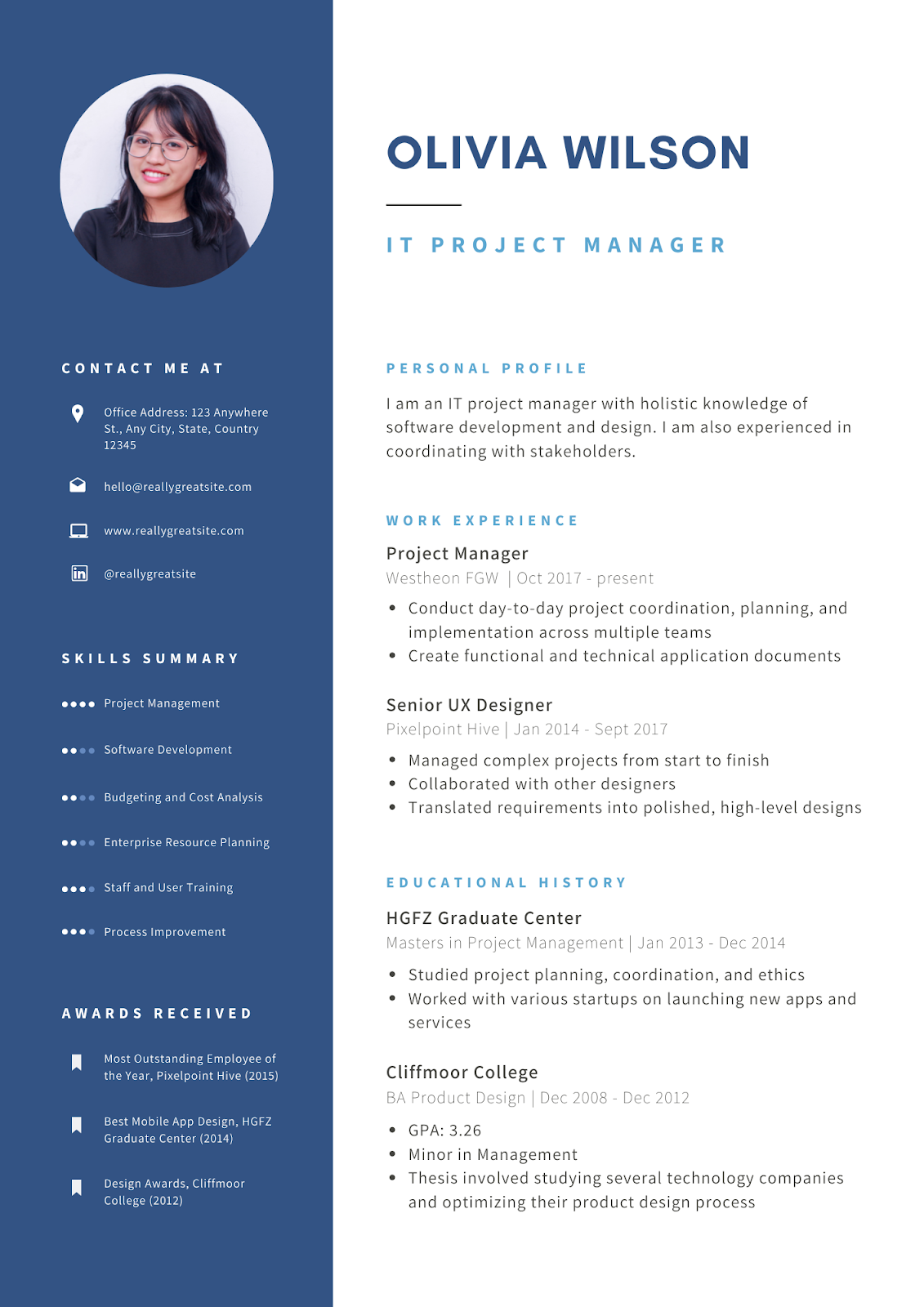
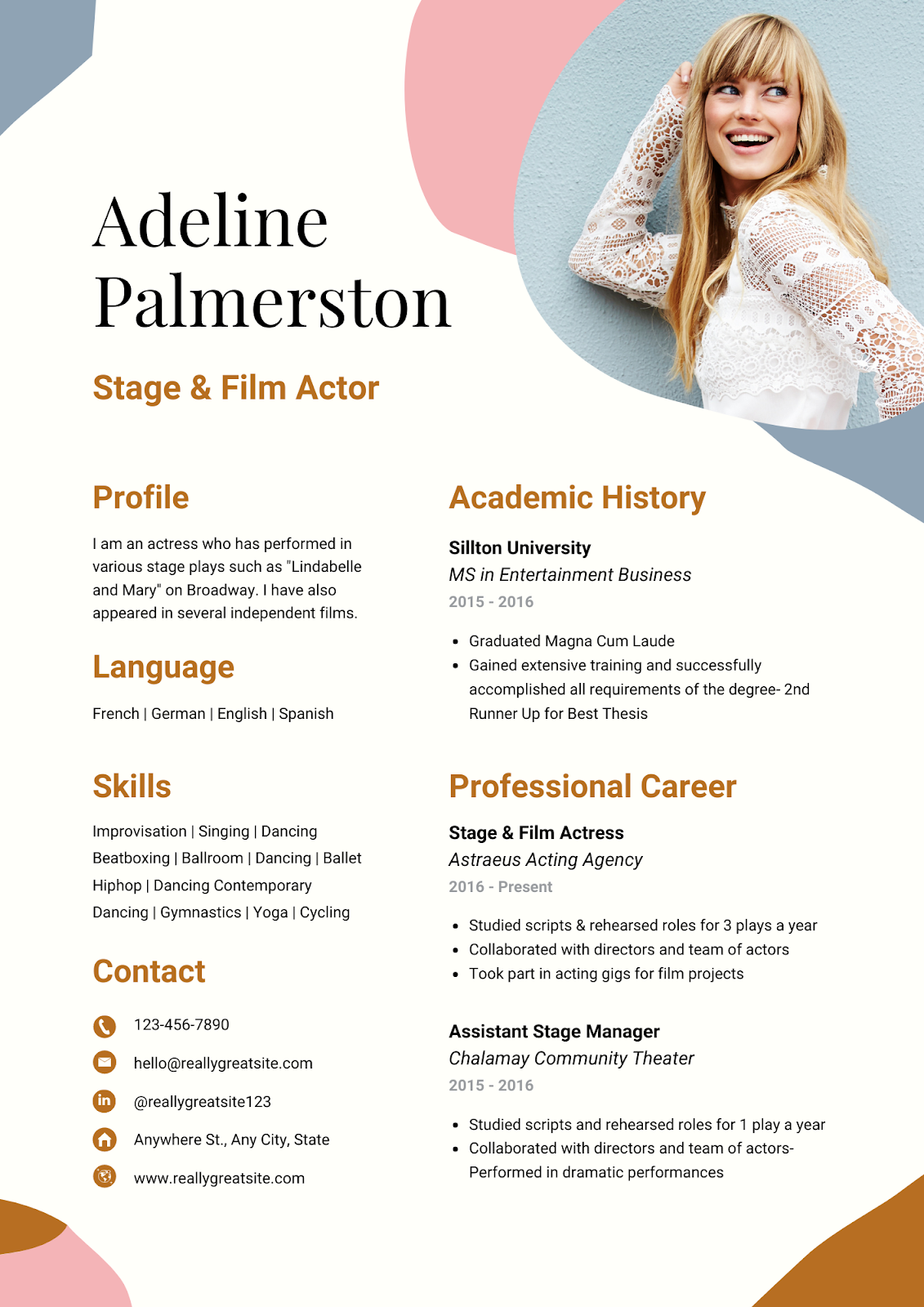
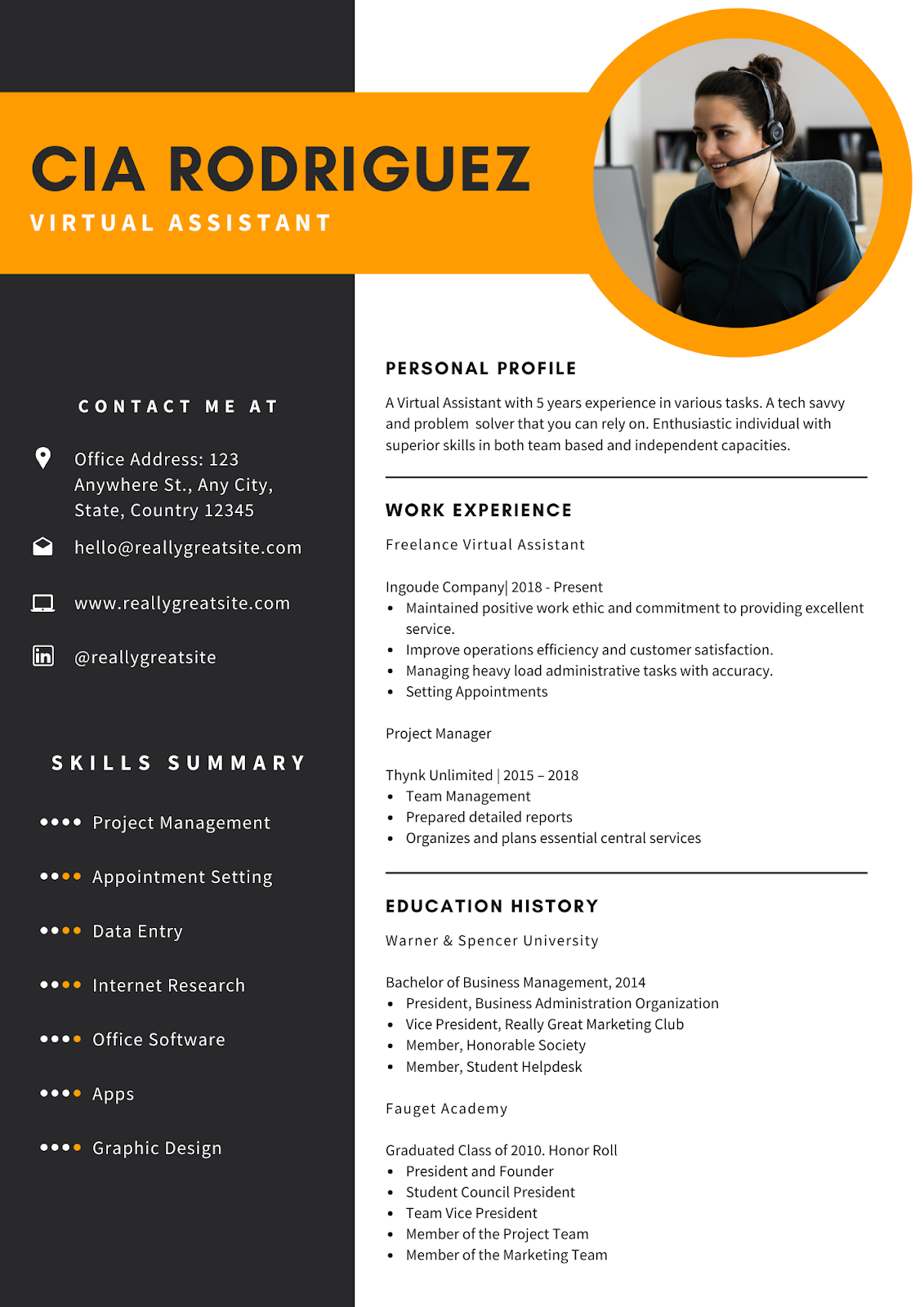
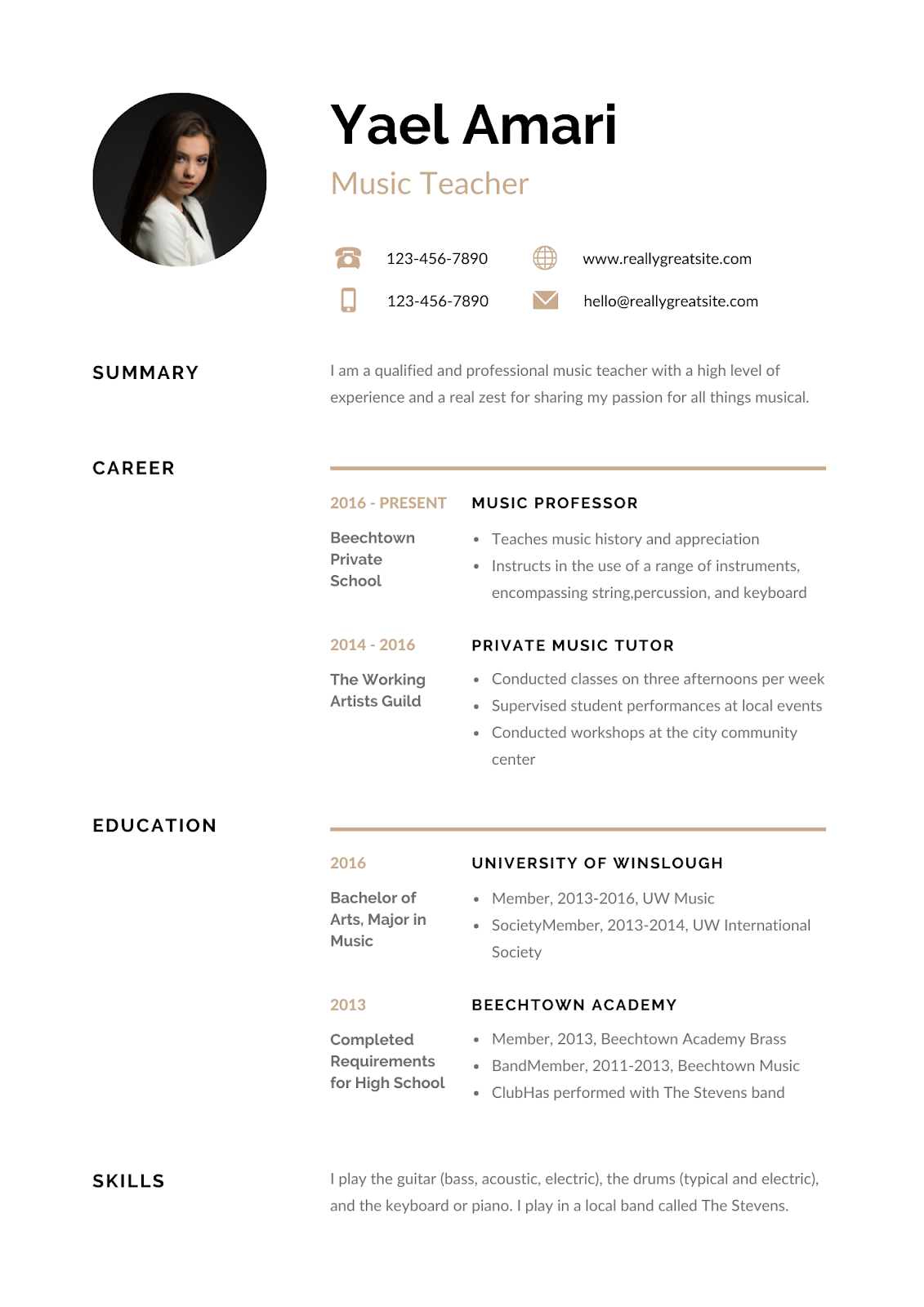
How to Write a Resume: The Process
Once a student has familiarized themselves with what a resume is and what needs to be included in one, they should have a go at creating their own by following the process below.
1. Choose Your Resume Writing Tool
Before they gather together the information they wish to include, students should decide on which software program they will use to write their resume on.
Here are a few popular options for students to choose from:
Microsoft Word
Word has a great selection of resume templates to choose from, for those with a subscription. Of course, if they don’t fancy using a template, and have the necessary skills, students can also opt to build their own resume design from scratch using this popular piece of software.
When the student has completed their resume, they can avail of Word’s options to export their file in a wide variety of formats, though PDF is usually the best choice.
Google Docs
No Microsoft Office subscription? No problem! Google Docs is a great, free alternative with many similar features to Microsoft Word. Just like Word, there are tons of free templates to avail of and the student will still be able to export their finished product as a PDF.
2. Decide on the Layout
There are actually two things to consider here: format and template.
Format
When we talk of format here, we are referring to the specific sections the student will include in the resume. While some of these sections will be non-negotiable (e.g. name, contact details, etc.), other sections will need to be decided on by the student.
There are three main types of format for students to choose from:
- The Functional Format
- The Chronological Format
- The Combination Format
The Functional Format
This format puts the main focus firmly on the applicant’s skills, rather than where and when they used them. Students list their education, experiences, and skills making sure to make them as relevant as possible to the job applied for.
For the more experienced job applicant, this format allows them to leave out information irrelevant to the job applied for. For inexperienced students, it allows them to highlight what education, experiences, and skills they do have and put them front and center for the employer’s attention.
The Chronological Format
This format lists experience, education, awards, etc, according to when they occurred. Typically information is laid out in reverse chronological order, i.e., with the most recent job, qualification, achievement, etc., at the top followed by the next most recent, and so on.
This format is great for giving an employer a snapshot of where the applicant is at right now.
It’s also an effective format for displaying gradual progression and advancement towards a specific career goal. Therefore, this resume format is well-suited to job seekers with plenty of experience.
The Combination Format
Looking for the best of both worlds? Then, the combination format might be the right choice. This layout suits applicants who want to highlight both their skills and their experience.
Rather than listing all previous experiences, education, etc., the applicant applies a general chronological order to the information presented, but they also choose selectively to make that information as relevant as possible to the applied-for position.
Resume Templates
Template here refers to the design layout. As mentioned above, as well as the student custom designing their resume, both Word and Google Docs come with many prebuilt resume templates ready to load and go.
These aren’t the only options, however. While the student may still want to word-process their resume on Word, Google Docs, or similar software, they can source, customize, or create resume templates with graphic design software such as Canva.
While the paid Canva subscription offers some great templates and features, the free option provides more than enough functionality to help students create their resumes too.
For the truly adventurous, Adobe Indesign is perfect for those who want to make a one-of-a-kind, standout resume. While it may be a little bit design-overkill for the average student, for those working in creative fields such as Graphic Design, it may be the perfect tool.
3. Outline the Sections
With software tools and resume templates chosen, students now need to organize the information they plan to include in their resumes. The various categories outlined in the What to Include in a Resume section below will serve as a useful template to help organize the information and understand how to write a resume.
First, students will need to learn about each section and decide which they’ll include in their resume or CV.
They should then write down everything they can think of for each section. They can make decisions on which information makes the final cut later in the process. Students shouldn’t worry too much about perfection at this stage.
Ideally, a resume should tailor the skills, qualifications, interests, and experience of the applicant to the post being applied for. But, for younger, less experienced applicants, the sections of the resume will generally be static.
Later, when more qualifications, experience, etc., have been gained, applicants will have to decide what to leave in or take out.
What to Include in a Resume
For students, a one-page resume is generally the most suitable format. While there can be some variation in the different sections of each resume, the following categories represent the most commonly included.
Name
Little explanation is required here other than be sure to include your surname, as well as your first name.
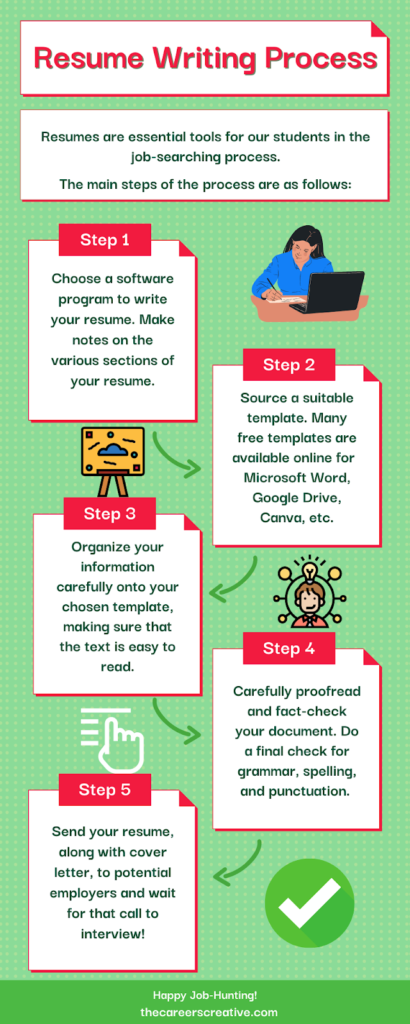
Date of Birth
In days gone by it was very common to see the date of birth on a CV or resume. These days, in many countries, there is often legislation in place to prevent age discrimination and many careers advisors, therefore, advise leaving off age or DOB.
However, applicants should always make decisions based on their own specific circumstances.
Marital Status/Religion/Nationality
It is best to leave these off your resume unless they are required specifically, e.g. applying for jobs overseas.
Leaving off non-essential information can prevent possible discrimination and leave more room on the resume for relevant skills and experience.
Photo
There is some disagreement about whether or not to include a photo on your resume. While it used to be common practice, these days many people choose to leave it off.
However, where looks are an important part of the job itself (e.g. actor, modelling, etc.) including a photo is appropriate.
Contact Details
As with the applicant’s date of birth, it used to be common practice for applicants to list their home address on their resume. Now, typically, a phone no. and email address are sufficient. If the applicant has a business website, they can include this too.
Contact information should be prominently displayed on the resume (often the top). Applicants shouldn’t make it difficult for employers to tell them the good news!
Also, students should make sure their email address looks professional. jonnylovesyummycake@gmail.com may not be suitable! If the student needs to set up a new address, they should do so.
Summary
As the name suggests, the summary encapsulates the most important skills and experiences of the applicant within a sentence or two.
This is a great way to catch an employer’s attention and get them to read more. A well-written summary can set your resume apart from the stack on a hiring manager’s desk.
Objective
This section communicates the goal or objective of the resume. Though not every resume contains an objective as standard, this section is short and can quickly and easily be adapted for each specific job applied for, giving a resume that all-important tailored-for-the-job appearance.
Education/Training
This section contains details of schools attended, training courses completed, and qualifications and certificates obtained. Applicants should also include any courses they are currently undertaking.
Work History/Experience
This is where the applicant lists all their work experience to date. Where the applicant doesn’t yet have a lot of formal work experience, they should list volunteer experience.
As well as the job/volunteer titles, the applicant should also link the duties they performed with the specific job they are applying for.
Students should list the name of the employer/volunteer organization, position title, and where they worked.
Skills
This can be an extremely important section, especially for younger applicants who may not have a lot to put in the work experience section yet. Students should compile their skills in a list form, starting with the most relevant to the job applied for. You can focus on technical skills or soft skills in this section.
Awards and Achievements
Another useful section, especially for students who want to bulk out a resume thin from lack of work experience.
Here, students should list any relevant awards or achievements they have earned, including when and where they earned them from.
Interests
Including a little about how you like to spend your free time can help the potential employer to form a more complete picture of who you are as an individual. As with every part of the resume, the applicant should think carefully about how they can include information in a way that makes them more appealing to the employer.
When students have chosen from the sections to include, they should type up their resumes and carefully organize the information onto their template.
WANT TO MAKE RESUME WRITING A WHOLE LOT EASIER FOR YOURSELF AND YOUR STUDENTS?
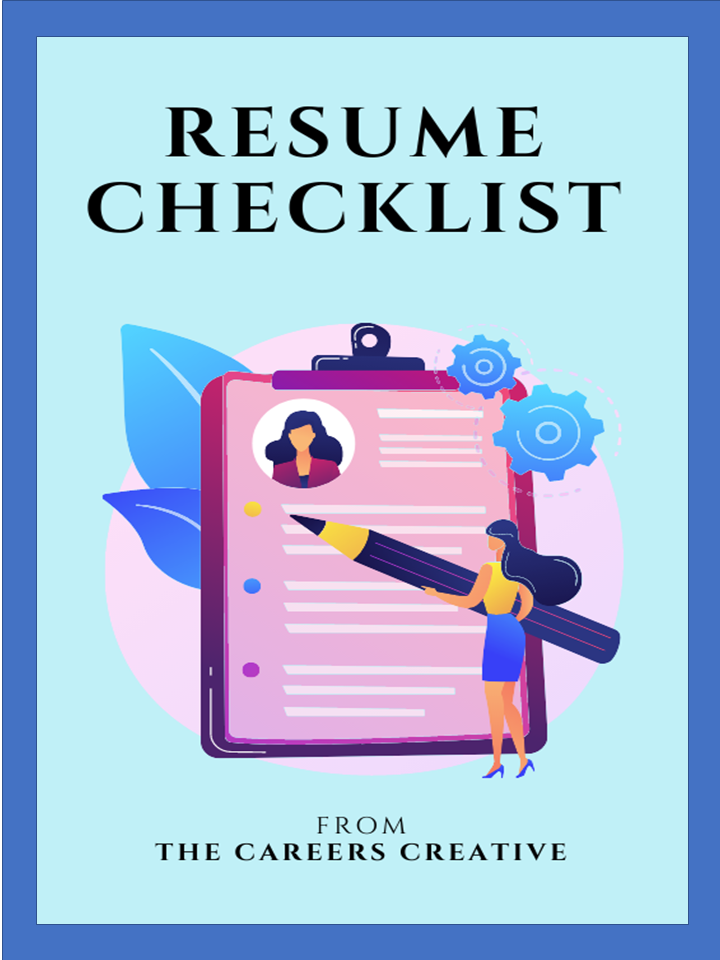
The Careers Creative Resume Writing Checklist provides criteria to help students with the formatting and features they need to include when creating their own resumes.
Our Resume Writing Checklist is a versatile tool that can be used as a writing guide, for self-assessments, or for peer assessments.
Grab Your FREE Copy of Our Resume Writing Checklist Below.
4. Edit & Proofread to Perfection
As with any writing process, editing and final proofreading aren’t extra steps to the writing process – they are the writing process. Don’t scrimp timewise here. You don’t get a second chance to make first impressions and, for the student applicant, the resume is the first impression.
It’s good practice to get a third party to look over the resume. So, students should seek out a willing (and literate!) friend, family member, or kind (ahem) teacher to help out.
5. Send Out Your Resume (& Cover Letter!)
Resume completed and polished to its shining best, it’s time for the students to gently place it in a suitably-sized envelope and send it through the mail to the eager Human Resources Manager or, as is more likely, send it off as an email attachment. Whichever way the resume is destined to make its way to a potential employer, it will need to be accompanied by a cover letter. And, of course, writing an effective cover letter is a whole other kettle of CVs in itself! Check out our comprehensive article on how to write a cover letter here.
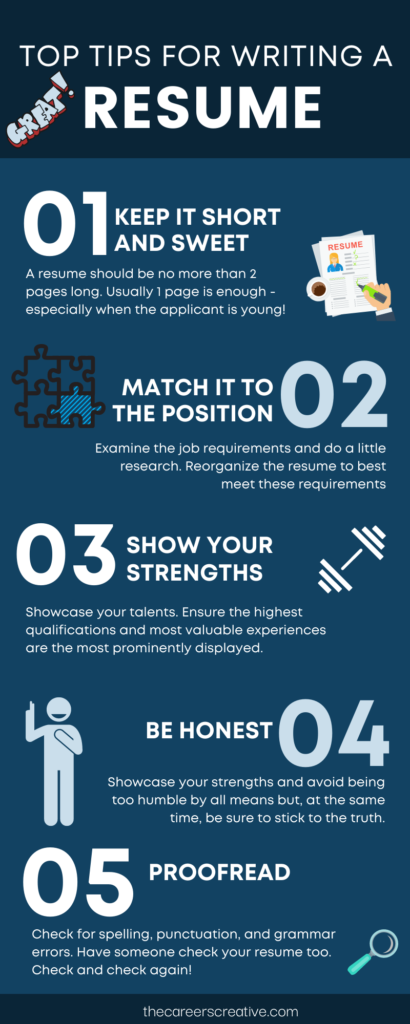
Helpful Tips on How to Write a Resume
- Keep things short and sweet. For young people just starting out, a 1 page resume is usually the perfect length. There’s nothing wrong with a short. lean resume. In fact, the potential employed will much prefer it than an bloated, over-padded affair!
- Students should examine the specifics of the job requirements and reorganise their resumes to best meet these requirements. Resume are NOT One-Size-Fits-All affairs! A resume should be adjusted to best fit the needs of the job applied for – every time!
- Resumes should be organized to showcase the student’s strengths. Students should make sure their highest qualifications and most impressive experiences are most prominently displayed.
- Honesty is the best policy when it comes to resumes! Employers are extremely wary of exaggeration and outright lying. Students should showcase their strengths and avoid being too humble, but at the same time be sure to stick to the truth. Due to technology, It is easier than ever before to perform online checks on candidates and hiring managers frequently do them.
- Use bold, underlining, and italics to highlight important information. You don’t want to overwhelm the reader, so students should avoid huge blocks of text and ensure there is plenty of white space to enhance readability.
- If students are sending hard copies of their resume and cover letter, when printing off their resume they should be sure to use good quality A4 white or off-white paper.
- It can’t be repeated enough! Students should check their resumes for spelling, punctuation, and grammar errors. They should also have someone else read through it to check too. Check and check and check again!
Credits:
Author: Shane Mac Donnchaidh
Title Image: People vector created by vectorjuice – www.freepik.com

